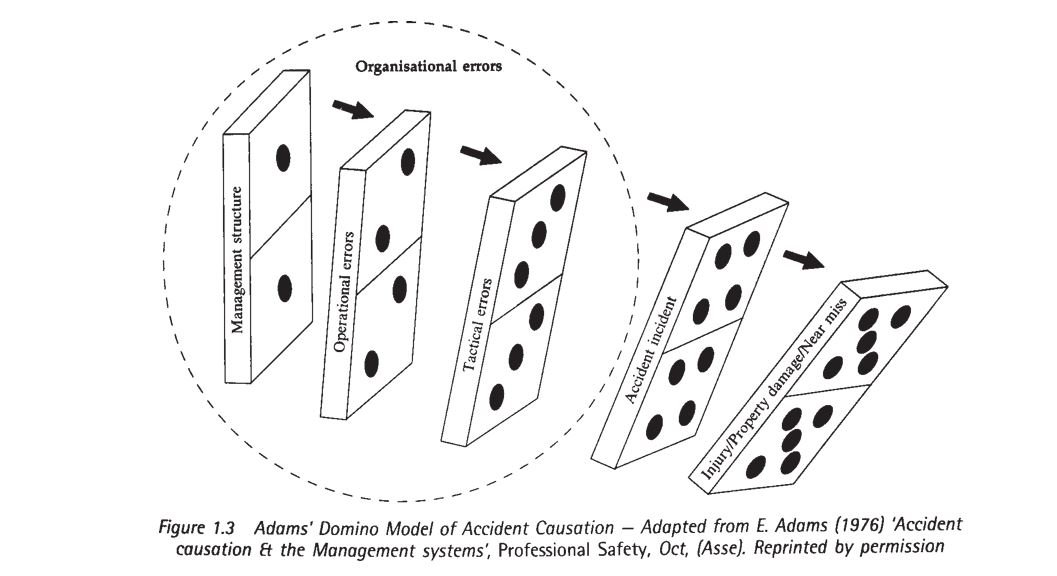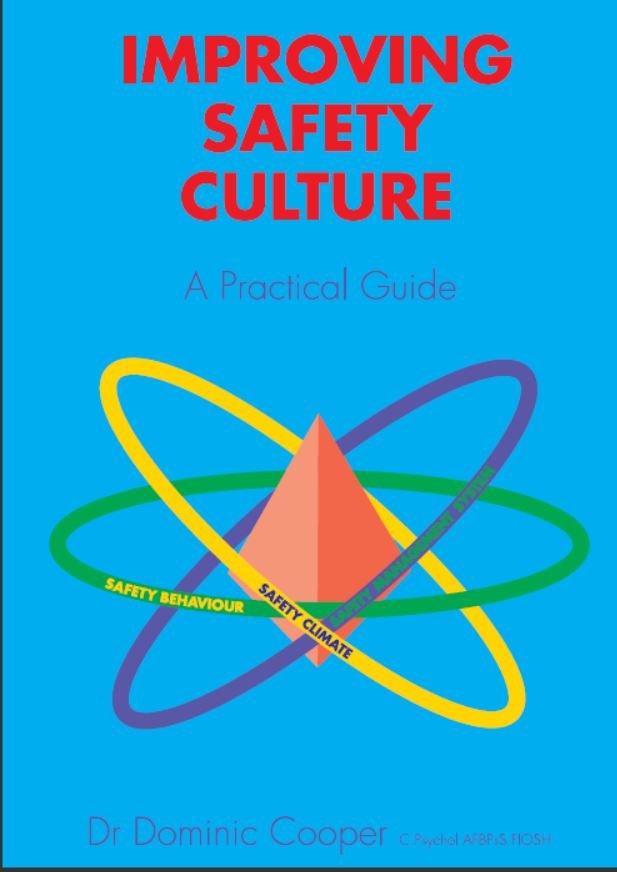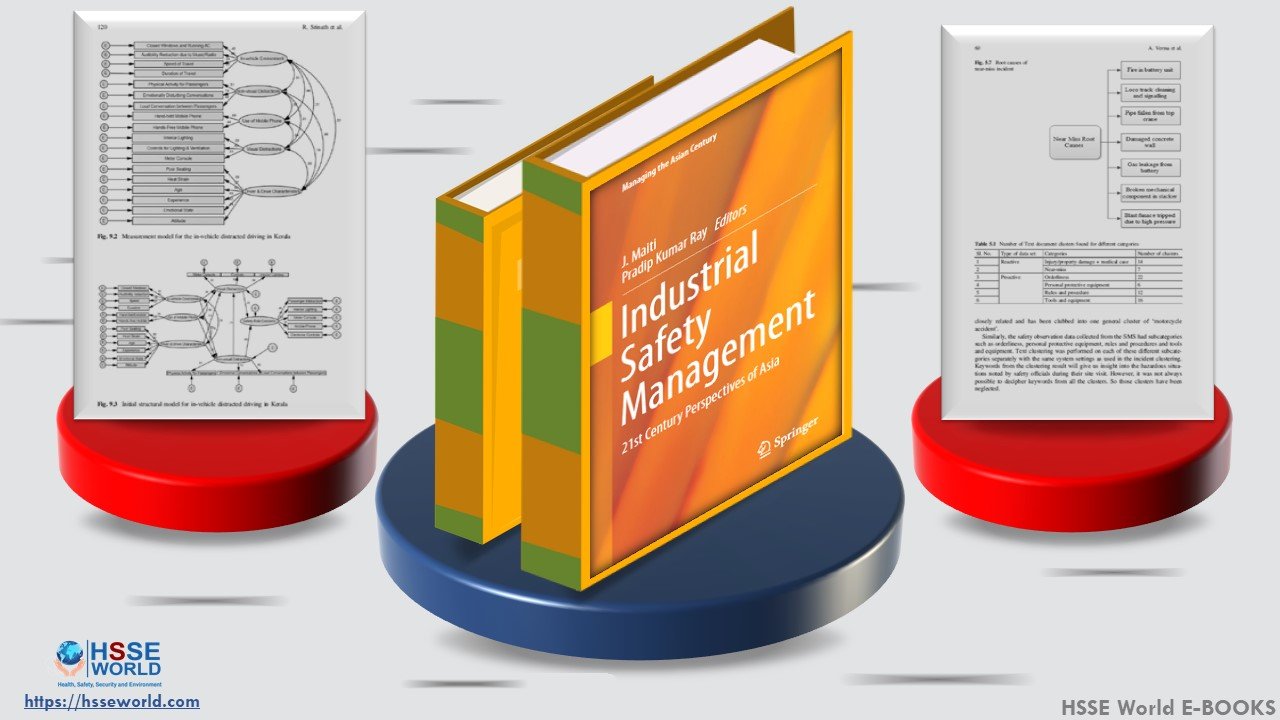In recent years companies have begun to recognise the important contribution that an effective safety culture can make to the control of their ongoing operational costs and the efficiency of their ongoing operations. Much of this is due to the recent introduction of EC goal-setting legislation that places the onus on organisations to identify and properly manage the risks created by their activities. Many organisations have realised that this provides the perfect opportunity for them to streamline their operational processes and optimise the associated management and control systems. In practice, it has also meant that responsibility for health, safety and environmental issues has become firmly established as an integral part of the line management function, rather than being the sole domain of the safety officer (or safety department as has traditionally been the case). Therefore, now more than ever before, all levels of line management need to possess a much greater knowledge of how to develop and implement high quality safety management systems. They also need to know how to manage safety on a day to day basis throughout their areas of responsibility.The traditional `policing’ role of the safety practitioner has also changed. No longer a mere safety officer, the safety practitioner’s role is now that of a high-level internal consultant. They are expected to offer independent advice to senior management on the development of the organi- sation’s safety policies and their short, medium and long term strategic objectives for creating and maintaining a positive safety culture.
In addition, they are expected to advise line-managers on both the development and implementation of appropriate control and monitoring systems and the review of ongoing safety performance, while at the same time conducting independent reviews of the whole safety management system. To fulfil these functions in an effective manner, it is self- evident that safety practitioners must be authoritative all rounders. While possessing an awareness of all aspects of safety per se, he or she will also need to:
- have an up-to-date and in-depth appreciation of all aspects of management and management systems
- be experienced in problem-solving and decision-making
- be highly aware of the effects organisational change and development issues (e.g. project management, team-working, downsizing, contracting out, etc.) exert on
Only when they are armed with all this knowledge will safety practitioners be in a position to recognise the need for change, and be able to positively influence unfolding events to help create an optimal safety culture throughout the organisation. Thus, because of their new consulting role, and the need to ensure that their recommendations accord with business needs, modern safety practitioners must be as familiar with all aspects of management as those practitioners from other disciplines (such as finance, human resources, production, etc.) who comprise the senior management team. Although the safety profession is making great strides to address these issues,
it is still too often the case that many safety practitioners lack knowledge of the most basic management tools and techniques and, therefore, lack an understanding of how they might be used to good effect.

| Preface | iii |
| Acknowledgments | viii |
| 1 The Concept of Safety Culture | 1 |
| Introduction | 1 |
| The Evolution of the Concept of Safety Culture | 3 |
| Accident Causation Models | 5 |
| Organisational Characteristics of a Good Safety Culture | 13 |
| Towards a Model of Safety Culture | 14 |
| How to Read This Book | 26 |
| Summary | 27 |
Section One The Immediate Level of Effort 29
- Effective Leadership for Developing a Safety Culture 30
Introduction 30
Leadership 30
Strategic Planning 32
Problem-solving 37
Increasing People’s Commitment to a Decision 43
Strategic Communications 51
Resistance to Change 54
- Methods of Evaluating and Integrating Organisational Systems 60
Introduction 60
Identifying structural problems 61
Using Workflow Analysis to Identify Specific Information-sharing Problems 62
Job Characteristics Analysis 67
Work group Communications 75
Job Analysis 86
Work Safety Analysis 92
- Developing Risk Control Systems 94
Introduction 94
What is Risk Assessment? 94
Risk Control Measures 103
Section Two The Intermediate Level of Effort 111
- Integrating Management Information Systems 112
Introduction 112
Management Control Mechanisms 112
Information Requirements 119
System Characteristics 125
Developing an Integrated Management Information System 130
- Safety Management System Auditing 144
Introduction 144
Developing a Safety Audit System 144
Establishing the Need for Safety Audits 146
Types of Safety Audit 147
Audit Frequency 150
Standards Required for Planning and Executing the Audit Programme 153
Audit Elements 157
Auditing Practice 163
Audit Follow-up 175
Reviewing the Audit System 175
Section Three The Ultimate Level of Effort 177
- Safety Propaganda and Safety Training 178
Introduction 178
Safety Information Campaigns 178
Safety Training 182
- Measuring Safety Climate 200
Introduction 200
Safety Attitudes 200
Safety Climate 204
Developing a Survey Instrument 217
- Improving Behavioural Safety 225
Introduction 225
Why Focus on Unsafe Behaviour? 226
Why do People Behave Unsafely? 228
How is Unsafe Behaviour Prevented? 230
Achieving Improvements in Safety Behaviour 233
Does it Work? 233
Putting a Behavioural Safety Initiative into Operation 234
Additional Reading 254
Index 255




